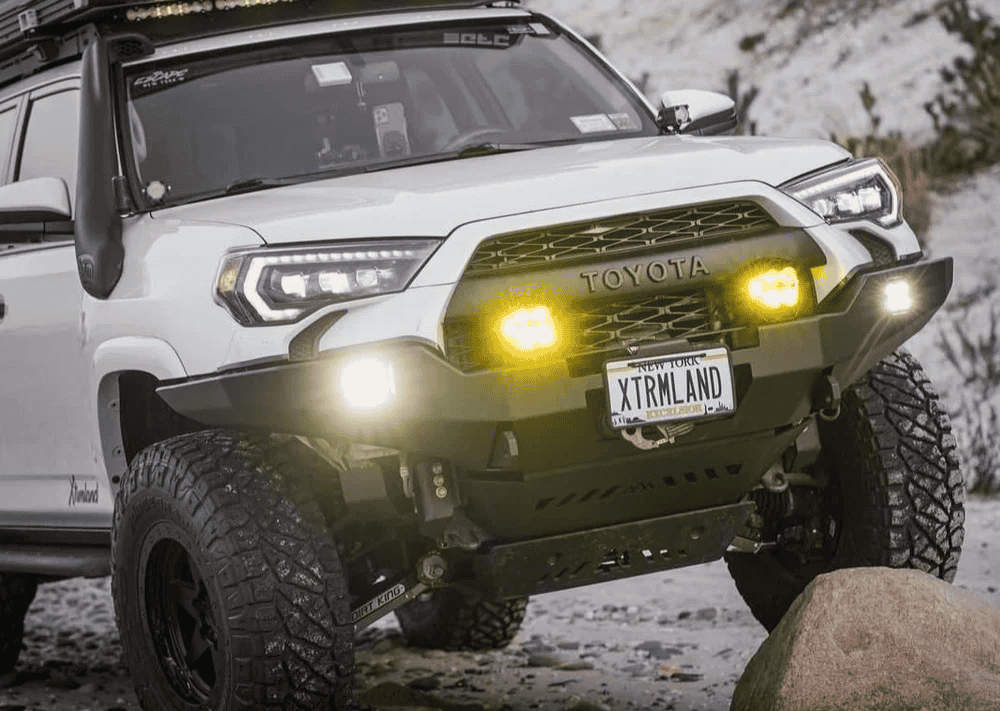Overland Vehicles

An off road slide in camper is a self contained living module that secures in the bed of a pickup and is shaped to handle rough tracks and uneven ground. The design focuses on stronger structure, protected corners, stout tie downs, and a center of gravity that keeps the truck composed on ruts and washboards. Materials trend toward lightweight composites, marine grade fasteners, and sealed joints to keep dust and water out. Floor plans favor compact storage, low profile cabinetry, and anchor points that prevent movement when the truck articulates.
Fitment starts with payload. Add the wet weight of the camper, passengers, fuel, water, recovery gear, and tools, then compare to the truck’s payload rating. A balanced setup keeps most mass forward of the axle line and low in the bed. Suspension tuning may include progressive leafs, helper springs, or airbags, paired with shocks that manage heat and control rebound on corrugations. Tires with sturdy sidewalls and correct load ratings support the ensemble.
Power and water systems define stay length. Many overland truck campers run a lithium battery bank with a battery management system, solar on the roof, and an onboard DC to DC charger for alternator input. Efficient fridges, induction cooking, and compact diesel or gas heaters stretch energy. Fresh water storage with a simple filtration approach protects fittings from vibration and cold. Insulation with proper vapor control prevents condensation in shoulder seasons.
Matching a camper to half ton, three quarter ton, or one ton trucks depends on actual ready to travel weight. Flatbed conversions open more storage and lower center of gravity but require bed replacement. Slide in units keep the truck bed but need careful weight distribution and frame friendly tie down placement. The goal is a stable platform with steering feel and braking performance intact.
Overland truck campers compete with vans, rooftop tents, and canopy systems. Compared to rooftop tents, a slide in camper brings hard sided shelter, weather resistance, lockable storage, and a quieter sleep. Against a van, a truck camper offers better departure angles, easier bed removal, and the ability to revert the truck to cargo duty. Flatbed campers increase room and mounting options, while canopy builds on bed racks trade interior comfort for lower weight and dynamic handling.
Winter travel highlights differences. Overland truck campers with real insulation, thermal breaks, and a controlled ventilation plan manage moisture and retain heat more effectively than soft tents. In desert zones, shade, vent placement, and reflective surfaces matter more than sheer R value. Dust mitigation includes positive pressure vents and door seals that do not collapse under vibration.
A good setup reduces steps from park to relax. Interior access to fridge and galley, quick bed conversion, and an awning you can deploy solo all add up. Tailgate and ladder layouts should not block doors or recovery gear. Keep recovery boards, tow points, and snatch gear reachable without unpacking the camper.
Start with a route profile. If you live on graded forest roads and occasional rocky climbs, a lighter custom truck camper with a modest power bank may be perfect. If you chase remote deserts for a week at a time, plan for larger lithium capacity, a smart charging plan, and protected water lines. Define your personal essentials, from bike storage and tool drawers to a workstation. Then assign a weight budget to every system so the final package stays inside the truck’s capacity.
Prioritize durability where the trail hits hardest. Corner protection, skid points for steps and tanks, and cabinet latches that stay closed on washboard make a big difference. Vent and duct layouts should avoid dust ingestion and prevent thermal hotspots around electronics. Choose finishes you can clean with a simple rinse after mud and silt days. For connectivity, some travelers add satellite internet for weather updates and navigation when cell service fades.
If you are exploring full scale overland builds beyond the camper itself, see how Overland rigs handle suspension, armor, and storage integration as a cohesive system. When the plan calls for tailored fitment and specialized storage, the Custom overland upfit approach shows how modular interiors, power systems, and exterior mounts can be designed around your truck and terrain. For a sense of process and quality standards, review Why choose OZK Customs to understand how goals, budget, and timelines are aligned before the first cut.
Bring measurements, payload numbers, and a simple sketch of your storage needs. Outline your cooking style, climate range, and how many nights you stay off grid. With those answers, a custom plan for overland truck campers can balance ride quality, comfort, and reliability while honoring the limits of your chassis.
Transform the ideas above into a build that fits your travel style. OZK Customs designs and installs complete systems for custom truck campers, from structure and cabinetry to suspension friendly tie downs, power, lighting, racks, and lighting for safe night travel. Our team tests for rattle control, dust sealing, and service access so the camper stays quiet and dependable when the trail gets rough. Share your routes and priorities, and we will map a solution that carries you farther with less hassle.
At the shop, your truck and camper are treated as one system. We focus on correct weight distribution, predictable handling, and clean wiring. The goal is simple. A custom truck camper that lets you sleep well, cook fast, and roll out at dawn with everything still in its place.
Ready to blueprint a custom truck camper that fits your routes, payload, and comfort goals? Tell us how you travel, and our team will translate your needs into a build plan that rides right, powers your essentials, and stands up to real world trails. Share your timeline and budget in the form to start your spec session with OZK Customs.
ADDRESS:
6159 E Huntsville Rd, Fayetteville, AR 72701
PHONE:
(479) 326-9200
EMAIL:
info@ozkvans.com